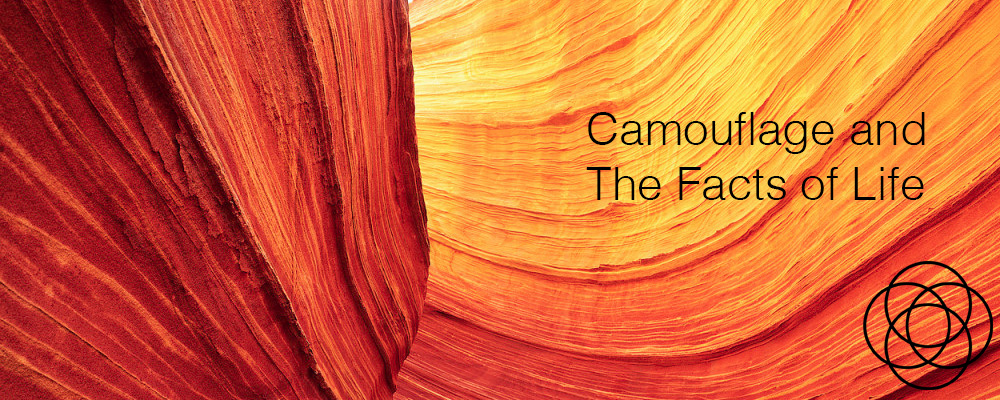I was looking through the window, settling into blog-writing mode while watching the play of sunlight and shade move across a particularly beautiful rock, when I realised that part of the rock wasn’t rock at all. It was a large, sunbathing, frilled lizard.
I tried shifting my gaze in an effort to blend him back into rock, but I couldn’t do it. Camouflaged one instant, revealed forever the next. My world shifted. The rock solid fact of the rock was shattered in an instant. What I had known to be true was no longer true, and there was no going back to the old way of seeing and believing it.
Yes, it’s only a rock. Yes, it’s only a frilled lizard. But it’s a true story, or, at least, it is until the next unexpected revelation.
“Look, there!” I imagine saying to someone else, “There, on that rock. It’s a frilled lizard!” And some will see it, and some won’t. Camouflage is a good trick, finely honed by nature to protect through deception.
The lizard has scuttled away now, and the rock itself will never be the same again in my personal little world because I’ll always see it now as the lizard rock, and the rock that found its way into this blog. And so things change.
I was at a party last weekend where a group of us were enjoying a free ranging conversation when someone piped up, “But what are the facts? I’m only interested in the facts!”
This kind of thinking always reminds me of butter and margarine. When I was a child, butter was suddenly declared unhealthy due to its saturated fats. We switched to margarine, a healthy choice based on science, we believed. A few years later, margarine was declared unhealthy due to many factors, and we switched back to butter. You know the story. It happens all the time now, and not only in matters of health and nutrition. If I were to dream of butter or margarine, I’d probably be processing dilemmas around perception, what – and who – to believe. Or saturated facts.
In fact, the fact is, many facts change, and facts can get us into as much trouble as they can also help us out.
One of the most enlightening fact-finding missions you can embark upon is to explore your dreams. Your dreams don’t yield universal facts. They yield personal facts – your personal beliefs about the world based on your experience of it. Best of all, your dreams yield your unconscious personal beliefs, the ‘facts of life’ that unconsciously drive the way you see your life and the way you live it.
Discovering your personal unconscious facts of life helps you to understand why you see life in the way that you do, why you respond to life in the way that you do, why you experience life in the way that you do. Once you become aware of your unconscious facts of life, the camouflage drops away, and you see yourself and your life in a new way. You may feel, looking back, that you have been deceived by those unconscious beliefs. Yes, yes, and yes, but be kind to yourself because you put them in place to protect yourself from dangers that once felt real.
As I said earlier, camouflage is a good trick, finely honed by nature to protect through deception.
(I took a five minute break there to stretch and make a cup of tea before reviewing what I had written. I flicked to the news screen at the same time, and this title jumped out at me: “When fact becomes fiction”. It’s the story about an Australian library that tongue-in-cheek proposed to move Lance Armstrong’s non-fiction books to the fiction section following “the disgraced cyclist’s own confession that his inspirational story is a lie”.)




4 comments on “Camouflage and the facts of life”